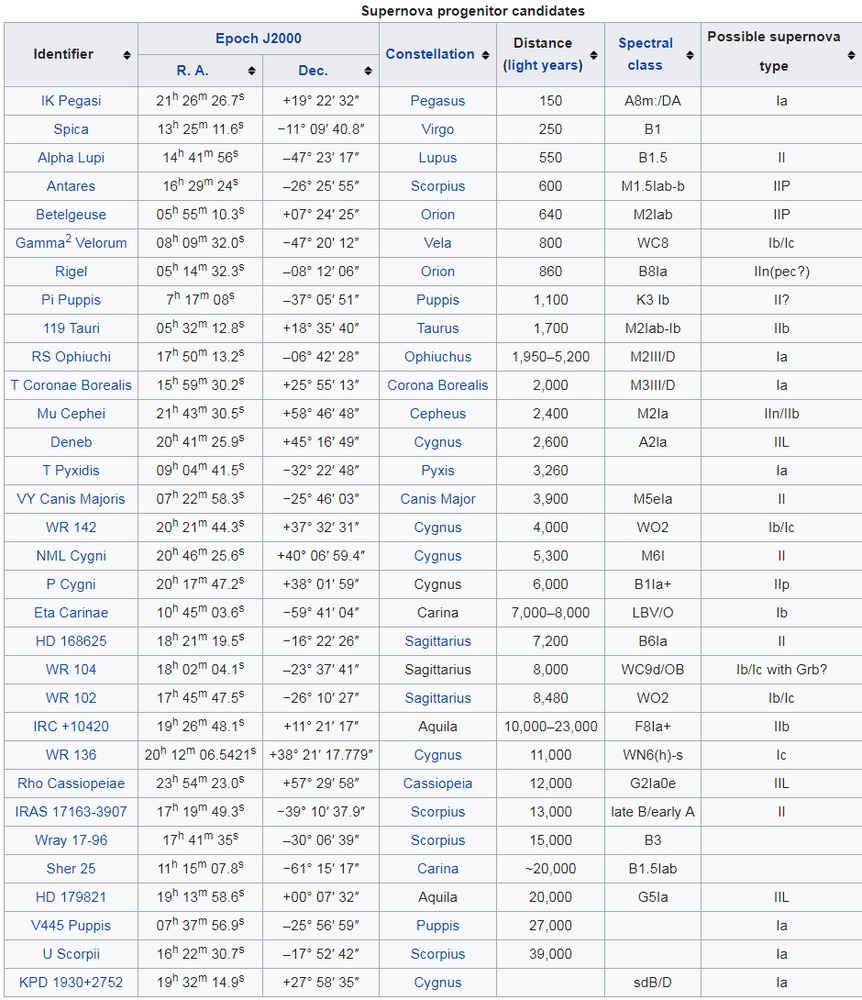Tau.Neutrino said:
Astronomers Finally Spot the Type of Star That Leads to Type 1C Supernovae
As astronomical phenomena go, supernovae are among the most fascinating and spectacular. This process occurs when certain types of stars reach the end of their lifespan, where they explode and throw off their outer layers. Thanks to generations of study, astronomers have been able to classify most observed supernovae into one of two categories (Type I and Type II) and determine which kinds of stars are the progenitors for each.
more…
Very interesting article. I wonder how many supernova progenitors have been found so far, and what colours they are?
The Wikipedia article on supernovas has been updated since last time I looked.
- Type Ia supernovae are produced from white dwarf stars in binary systems

> There are a number of difficulties reconciling modelled and observed stellar evolution leading up to core collapse supernovae.
No kidding.
Progenitors that are “Red supergiants have been observed but only at relatively low masses and luminosities. Several progenitors of Type IIb supernovae have been confirmed, and these were K and G supergiants, plus one A supergiant.” That still leaves supernova progenitors of all colours – red, orange=K, yellow=G and blue=A.
I can’t find a list of stars that have been observed to go supernova.
The following is a list of stars that are threatening to go supernova in future. The range of spectral types is astonishing, no two stars in the list have the same spectral class. There’s also a very high probability that the star next to go supernova in the Milky Way is not on that list. There’s about a 75% probability that the next star to go supernova in the Milky Way will be further than 26,000 light years from us.

